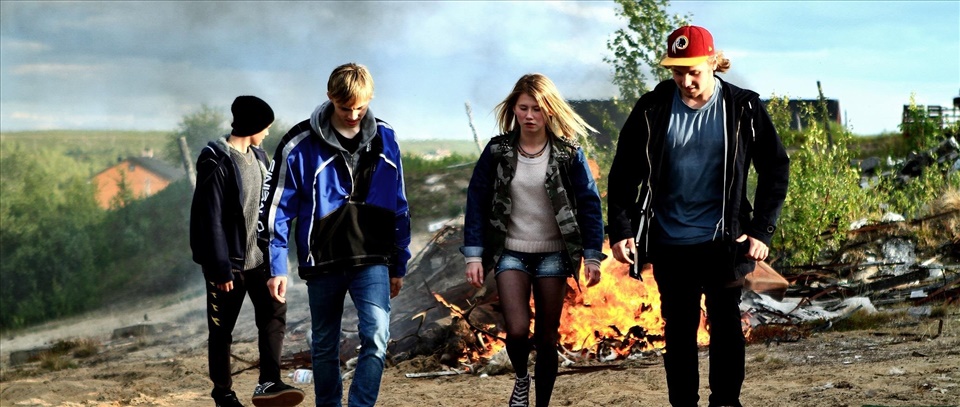
Oh Maigon girl
Author: Tina Andersson, Norgesfilm AS (CC BY-SA), ndla.no
Watch the film
About the filmmaker
Marja Bål Nango (1988-) is a Sámi artist and filmmaker. Several of her films have been shown at film festivals all over the world. Her film education is from Nordland School of Art and Film and Film and Television Science at Lillehammer College.
Nango became young artist of the year during the international indigenous festival Riddu Riđđu in 2011. In 2015, she received the debut award Skårungen for the short film Hilbes biigá. Skårungen has a prize of 25,000 kroner which is awarded by the Nordnorsk Filmsenter.
Other awards and nominations
- nominated for Tromsøpalmen (2015) at Tromsø International Film Festival (TIFF), an award given to the best film in the side program Film fra Nord
- the swedish UR award (2015)
- selected to participate in the competition program at both the Kortfilm Festival in Grimstad and the Nordisk Ungdom Film Festival
Background
There is little that is «typical Sámi» in Hilbes biigá. Nevertheless, this short film reflects young Sámi reality today. The film has been screened at a number of film festivals around the world and won several awards.
Fifteen-year-old Máigon and her best friend Ánne-Sire live in a small village on the Arctic tundra. It’s summer, the midnight sun is shining and the nights are nightless. The somewhat naive Máigon is challenged by the more experienced Ánne-Sire to make her sexual debut.
Máigon feels pressured, but she has her own plan: a road trip to Sweden, but not without risk. Hilbes biigá is a punk road movie about friendship, sexuality, boundaries and not least longing.
Hilbes biigá has several similarities with the Swedish feature film Fucking Åmål (1998), by director Lukas Modysson. Fucking Åmål depicts the youth enviroment in a small town in nothern Sweden.
7 Sámi Stories
Since the establishment of the International Sámi Film Institute (ISFI) in Kautokeino in 2009, Sámi film has really made a name for itself. Hilbes biigá is part of the renowned film program «7 Sámi Stories», which has so far shown seven Sámi short films at over 70 film festivals around the world.
TASKS
A. Review the film Hilbes biigá
First discuss these questions with the person sitting next to you, or together in class:
- Do you know of any films about youth culture, alcohol testing and peer pressure?
- Do you like this kind of film?
- Is there a difference between being young in big cities like Stockholm and Oslo, compared to smaller places like Umeå and Kautokeino?
In this assignment, you will write a film review for the Sámi short film Hilbes biigá. You must watch the film before doing the tasks.
Remember that a good film review should include the title of the film, information about who made it, a description of the genre and theme, and an assessment of the narrative technique and tools. Also feel free to put the film into context with other similar films.
B. Write a film review:
- Study the facts about the film. Search for the film on the Internet and read about it on various websites.
- Write a review of the film to local newspapers as a guide for those wondering if they should watch this film.
C. Narrative techniques and tools in Hilbes biigá
A film tells stories in ways that engage and touch us. Film uses some of the most effective visual tools available; moving pictures and sound.
- What is the short film about?
- Describe the order of the pictures in the film.
- How would the story have been if the pictures were in a different order?
- Which image frames and camera angles are used?
- In what way are sound and music used in the film?
- Describe how the film uses light and color.
- Describe the arctic tundra these young people are in. Compare with what the natural and cultural landscape looks like where you live. Could the film just as well have been shot in your local environment?
- Discuss alternative endings and how Máigon and Ánne-Sire are doing afterwards.


